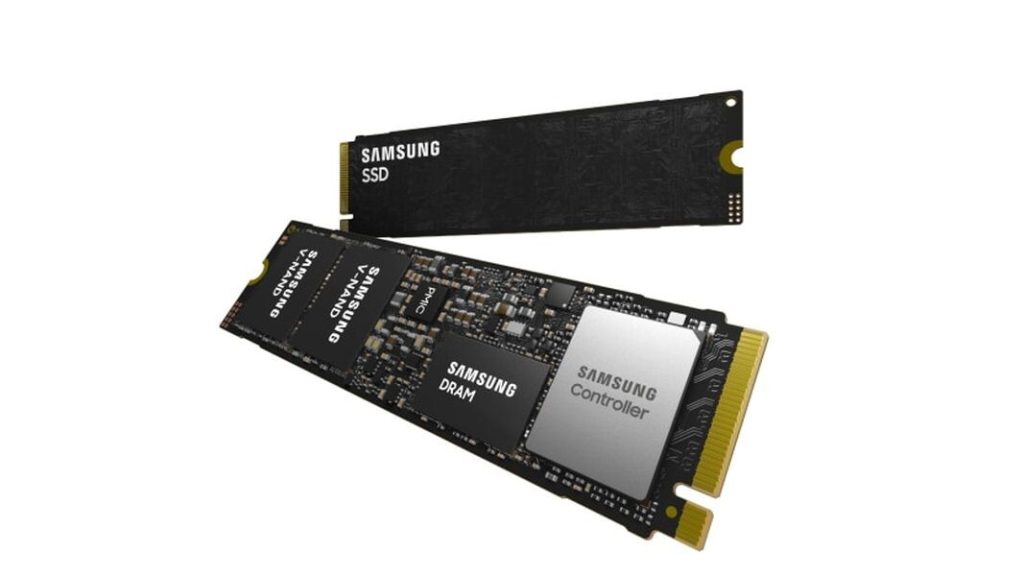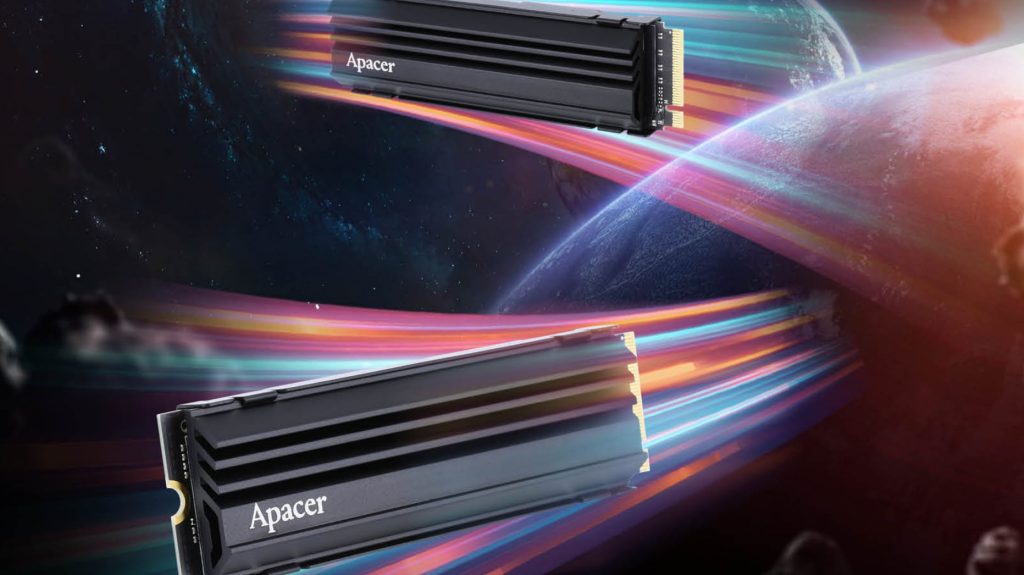Solid-State Drives (SSDs) have come a long way since their inception. What was once a luxury feature reserved for high-end systems is now a standard in consumer computing. The technology behind SSDs has continuously improved, offering faster read and write speeds, better reliability, and lower power consumption. But the real game-changer in recent years has been the rise of NVMe (Non-Volatile Memory Express) and PCIe Gen 4 (Peripheral Component Interconnect Express Generation 4). Together, these technologies have brought dramatic improvements in SSD performance, and they are shaping the future of computing across various industries.
In this article, we’ll explore how NVMe and PCIe Gen 4 are changing the landscape of SSDs and why they’re becoming essential components in modern systems.
1. The Basics of SSDs: From SATA to NVMe
Before diving into NVMe and PCIe Gen 4, it’s important to understand where SSDs started. Traditional SSDs used to connect to a system via the SATA (Serial ATA) interface, which was originally designed for hard drives. While SATA SSDs provided a significant performance boost over HDDs, their speed was still limited by the capabilities of the SATA interface, which maxes out around 600 MB/s.
In contrast, NVMe is a more recent protocol that was designed specifically for SSDs to exploit the full potential of flash memory. NVMe SSDs connect to the motherboard via the PCIe (Peripheral Component Interconnect Express) lanes, allowing them to take advantage of the much higher bandwidth that PCIe provides.
Unlike SATA SSDs, which use the AHCI (Advanced Host Controller Interface) protocol, NVMe leverages a more modern architecture, offering lower latency, higher throughput, and greater scalability. This is a fundamental shift in the way SSDs communicate with the system, allowing for much faster performance.
Key Advantages of NVMe Over SATA:
- Faster Speeds: NVMe can reach speeds of up to 3500 MB/s or higher, compared to SATA SSDs, which typically max out at 550 MB/s.
- Lower Latency: NVMe SSDs have reduced response times, resulting in faster access to stored data.
- Better Scalability: NVMe is designed for future improvements in performance and density.
2. PCIe Gen 4: The Next Leap in Data Transfer Speeds
PCIe Gen 4 is the latest iteration of the PCIe standard and represents a massive leap forward in terms of data transfer speeds compared to its predecessor, PCIe Gen 3. PCIe Gen 4 delivers 16 GT/s (gigatransfers per second) per lane, effectively doubling the data rate of PCIe Gen 3, which maxes out at 8 GT/s. This increase in bandwidth directly impacts NVMe SSD performance, allowing them to push speeds that were previously unthinkable.
A PCIe Gen 4 connection allows for a total bandwidth of 64 GB/s across all lanes (for a x16 connection), while PCIe Gen 3 is limited to 32 GB/s. This improvement is critical for applications like gaming, content creation, and data-intensive tasks such as video editing, 3D rendering, and data analysis.
The combination of NVMe and PCIe Gen 4 gives modern SSDs the ability to provide insane speeds, making them a key enabler of next-generation computing experiences.
Key Advantages of PCIe Gen 4 for SSDs:
- Higher Throughput: PCIe Gen 4 can deliver speeds up to 7000 MB/s or more, far surpassing PCIe Gen 3 SSDs, which max out around 3500 MB/s.
- Faster Data Transfers: PCIe Gen 4 allows for quicker read/write operations, resulting in snappier performance for everything from booting up your system to loading massive files.
- Improved Multitasking: With higher bandwidth, Gen 4 SSDs handle multiple data requests concurrently, making them ideal for high-performance applications.

3. NVMe and PCIe Gen 4 for Gamers: The Need for Speed
For gamers, faster load times and seamless performance can make a huge difference. NVMe SSDs, particularly those using PCIe Gen 4, offer lightning-fast load times, which can drastically improve gaming experiences.
Games are becoming more demanding, with ever-larger worlds, more detailed textures, and faster gameplay. These larger files require high-speed storage to load quickly and efficiently. Traditional HDDs or even SATA SSDs can no longer keep up with the demands of modern gaming.
With PCIe Gen 4, SSDs are capable of achieving speeds in excess of 7000 MB/s, allowing for instant game loading and faster asset streaming during gameplay. Open-world games like Cyberpunk 2077 or Red Dead Redemption 2 are excellent examples where NVMe PCIe Gen 4 can provide smoother, uninterrupted gameplay by reducing in-game load times and pop-in effects.
Key Benefits for Gamers:
- Faster Game Loading: Games load almost instantly, reducing wait times and enhancing immersion.
- Seamless World Streaming: Open-world games can stream assets more smoothly, without noticeable delays or pop-ins.
- Improved VR Experiences: Faster load times and reduced latency are critical for a smooth virtual reality (VR) experience.
4. Content Creators and Professionals: Redefining Workflow Efficiency
For content creators—whether in video production, 3D modeling, or scientific computing—speed is paramount. PCIe Gen 4 NVMe SSDs enable massive performance improvements when dealing with large files and complex workflows.
In video editing, for instance, the 4K and 8K video resolutions being adopted across various industries require rapid data read and write speeds to handle massive video files. With PCIe Gen 4, video editors can seamlessly work with high-definition footage, apply effects in real-time, and export projects faster than ever before.
3D modelers, architects, and engineers benefit from the speed of NVMe SSDs as well, particularly when dealing with large datasets or CAD files. These professionals require not only quick loading times but also the ability to manipulate heavy files without delay. PCIe Gen 4 SSDs can drastically reduce the time spent waiting for software to load or for large files to transfer, enabling more time spent on actual creation.
Key Benefits for Content Creators:
- Faster Rendering and Exporting: Video editors can work with high-resolution content with minimal lag, speeding up production times.
- Smooth Workflow: Content creation software loads and processes large files more efficiently.
- Real-time Collaboration: Faster file transfers and faster access to shared resources enable seamless collaboration.

5. The Future of SSDs: PCIe Gen 5 and Beyond
As SSD technology continues to evolve, the next step is PCIe Gen 5, which is already starting to make its way into consumer hardware. PCIe Gen 5 doubles the bandwidth of PCIe Gen 4, pushing data rates to 32 GT/s per lane, which translates to speeds up to 14,000 MB/s. With PCIe Gen 5, we can expect SSDs to become even faster, unlocking new levels of performance for demanding applications such as 8K video editing, real-time 3D rendering, and advanced AI workloads.
Additionally, the future will see even more efficient 3D NAND technology, allowing SSDs to store more data in less physical space while maintaining performance. Innovations in storage controllers and advanced caching mechanisms will continue to enhance SSD performance, making it possible to handle even more complex and data-heavy tasks.
What to Expect:
- PCIe Gen 5 SSDs: Future SSDs will push the boundaries of speed with up to 14,000 MB/s.
- 3D NAND Advancements: Increased storage density and better reliability.
- AI-Enhanced Storage: New technologies to improve read/write speeds dynamically based on workload requirements.
The combination of NVMe and PCIe Gen 4 has already transformed SSD technology, delivering blazing-fast speeds, reduced latency, and enhanced reliability for a variety of users, from gamers to content creators. These advancements are helping drive the evolution of high-performance computing, enabling smoother, faster, and more efficient workflows.
Looking ahead, PCIe Gen 5 and innovations in NAND technology promise even more incredible speeds and capabilities. Whether you’re a gamer looking for faster load times, a content creator needing efficient storage for massive files, or simply someone wanting the best performance in your PC, the future of SSDs is bright, and it’s just getting started.
With NVMe and PCIe Gen 4 (and beyond) leading the way, SSDs will continue to push the boundaries of what’s possible in computing and redefine the performance standards for years to come.

